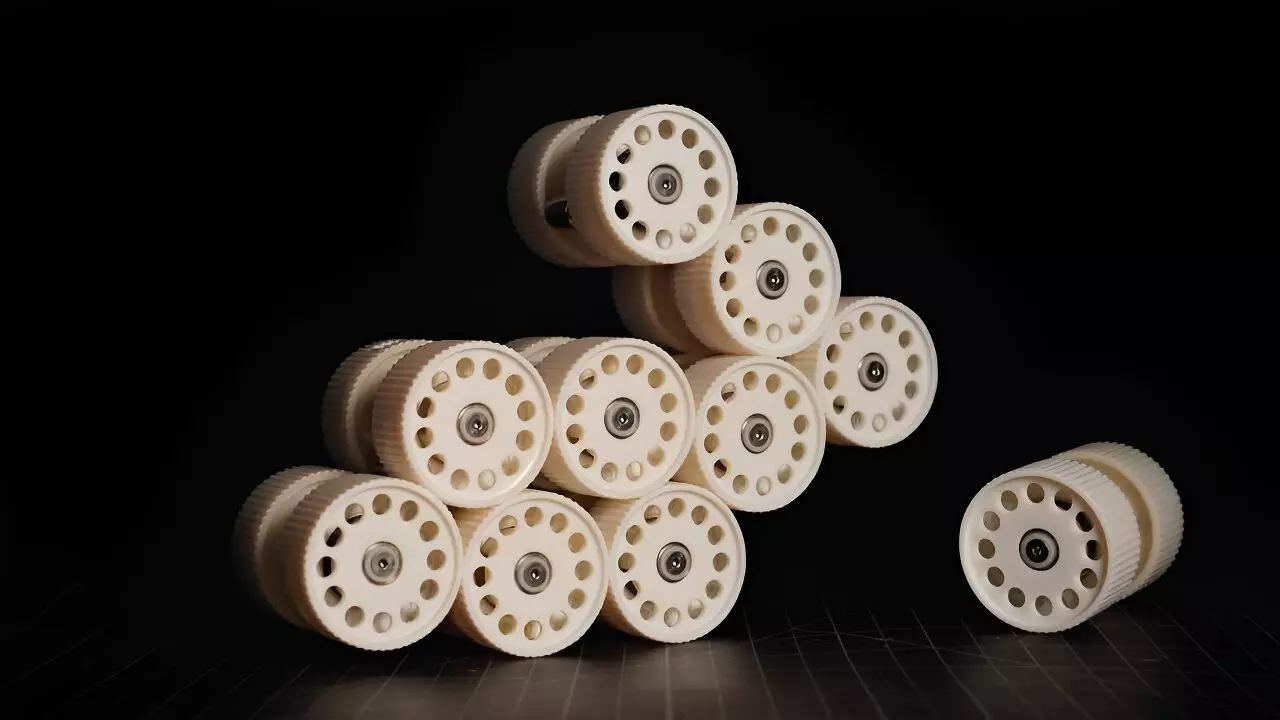Swarming behavior in nature has fascinated physicists for years, as schools of fish and colonies of bees move in synchronized patterns that resemble the flow of a liquid. Physicists like Heinrich Jaeger and Baudouin Saintyves are particularly intrigued by this phenomenon and have applied fluid mechanics principles to the development of modular, adaptive robotics. Their latest creation, known as the “Granulobot,” draws inspiration from swarming behavior, allowing it to split apart, reassemble, and adapt to its environment.
The Granulobot is composed of simple, cylindrical, gear-like units, each equipped with two magnets that can rotate around the cylinder’s axis. These units have the ability to connect magnetically, push their neighbors, and cause them to spin, ultimately allowing the entire system to move as a cohesive unit. This design enables the Granulobot to shift between rigid and soft states, blurring the lines between soft, modular, and swarm robotics.
Jaeger emphasizes the importance of soft robotics in applications where robots interact with humans, noting the need for safety and adaptability. The ability of the Granulobot to change shape and perform various functions makes it ideal for scenarios like search and rescue missions, where navigating challenging terrain is essential. By leveraging granular materials and the concept of jamming, the Granulobot can transition between liquid and solid states based on contact, rather than temperature.
While the current Granulobot prototype consists of larger cylindrical units, Jaeger envisions the potential for miniaturization on a massive scale. Thousands of tiny units could come together to form a singular mass, demonstrating a self-organizing approach that showcases the versatility of the technology. Additionally, the physics principles driving the Granulobot are not confined to specific conditions or environments, making it adaptable for use underwater or even in outer space.
Beyond robotics applications, Jaeger and Saintyves are using their research to explore innovative ways of thinking about matter and energy transfer. By merging self-coordination with environmental interactions, the Granulobot blurs the line between programmable materials and autonomous robots, offering a glimpse into a continuum of possibilities. This groundbreaking approach has the potential to revolutionize not only robotics but also our understanding of how materials can adapt and respond to their surroundings.
The Granulobot represents a significant step forward in the field of robotics, drawing inspiration from swarming behavior in nature and leveraging granular materials to achieve unprecedented flexibility and adaptability. By exploring new frontiers in modular, self-organizing technology, Jaeger and Saintyves are pushing the boundaries of what is possible in the world of robotics and beyond. As we continue to unlock the potential of the Granulobot, we open the door to a future where programmable matter and autonomous systems merge into a seamless continuum of innovation.



Leave a Reply